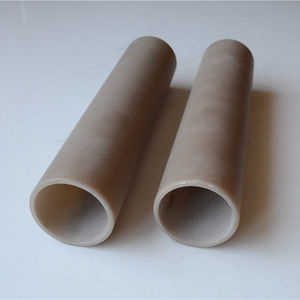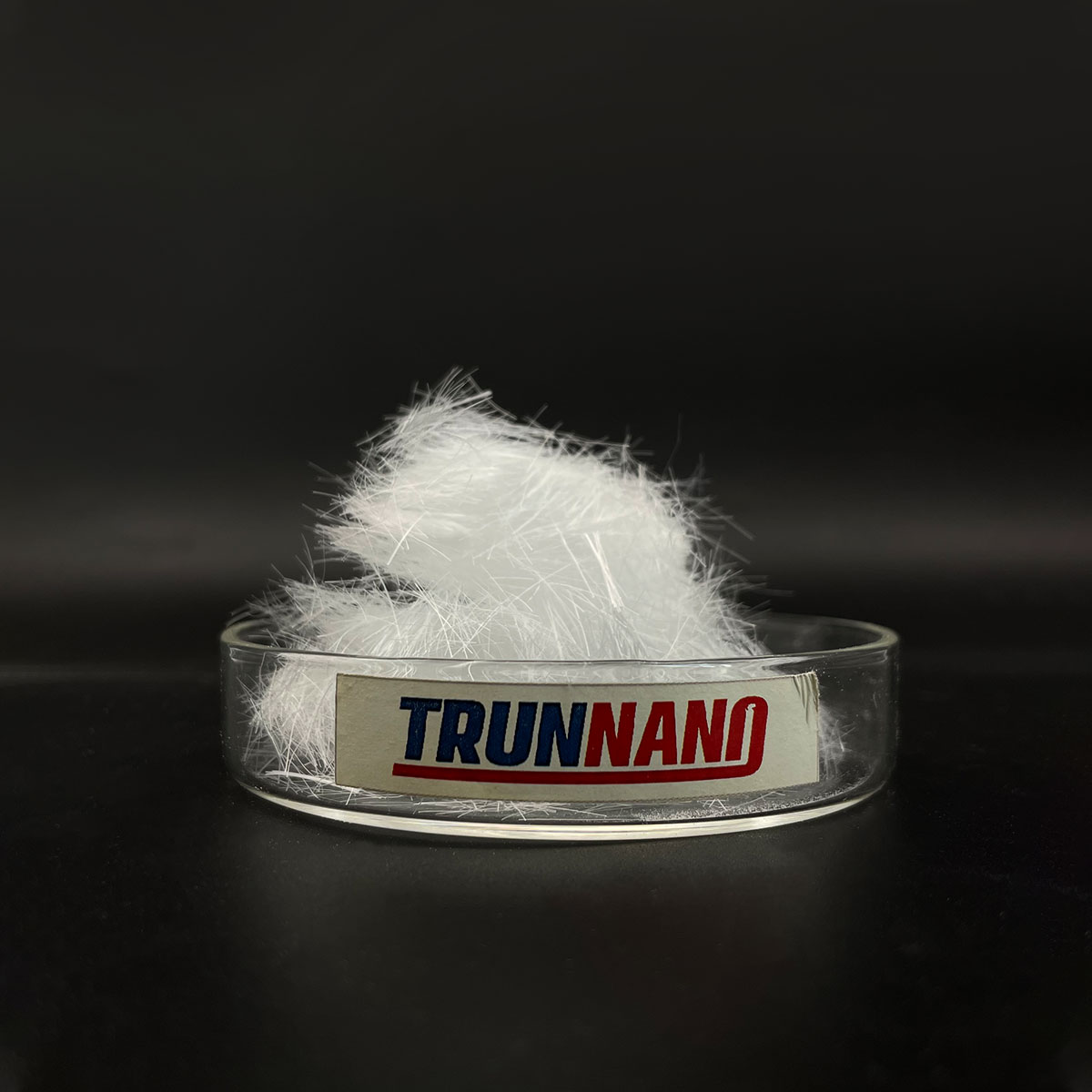The entry period for the “Luoyang in Its Heyday, Shared with the World— ‘iLuoyang’ International Short Video Competition” has now concluded with great success. Attracting participants from across the globe, the competition received more than 1,300 submissions from creators in 19 countries, including the United States, Sweden, South Korea, Yemen, Germany, Iran, Mexico, Morocco, Russia, Ukraine, and Pakistan. Through the lenses of these international creators, the ancient capital of Luoyang was showcased from a fresh, global perspective, highlighting its enduring charm and cultural richness. After a thorough review process, the video titled “Luoyang in Its Heyday, Shared with the World” was honored with the Jury Grand Prize. The award-winning piece is now available for public viewing—we invite you to watch and enjoy.
Author: admin
Luoyang in Its Heyday, Shared with the World— ‘iLuoyang’ International Short Video Competition” Wraps Up with Resounding Success
The entry period for the “Luoyang in Its Heyday, Shared with the World— ‘iLuoyang’ International Short Video Competition” has now concluded with great success. Attracting participants from across the globe, the competition received more than 1,300 submissions from creators in 19 countries, including the United States, Sweden, South Korea, Yemen, Germany, Iran, Mexico, Morocco, Russia, Ukraine, and Pakistan. Through the lenses of these international creators, the ancient capital of Luoyang was showcased from a fresh, global perspective, highlighting its enduring charm and cultural richness. After a thorough review process, the video titled “Luoyang in Its Heyday, Shared with the World” was honored with the Jury Grand Prize. The award-winning piece is now available for public viewing—we invite you to watch and enjoy.
Is Google Search’s Ultimate Form an Answer Engine or a Discovery Engine?
Google Announces Major Search Evolution: Answer Engine or Discovery Engine?
(Is Google Search’s Ultimate Form an Answer Engine or a Discovery Engine?)
MOUNTAIN VIEW, Calif. – Google Search faces a fundamental question. Is its future as an instant answer provider or a tool for deeper exploration? Recent changes push Search toward direct answers. This shift sparks debate about the service’s core purpose.
Google increasingly provides answers directly on the search results page. Users often get facts, definitions, or summaries instantly. They might not need to click a website link. This approach positions Search as an “Answer Engine.” It prioritizes speed and convenience.
However, critics argue this undermines the web. Websites lose valuable traffic. This traffic supports content creation. Less traffic might mean less high-quality information exists online eventually. Others worry about user learning. Clicking links and reading builds deeper understanding. Instant answers might encourage surface-level knowledge.
Supporters highlight the time saved. Getting answers fast is efficient. It solves immediate problems well. Google states it aims for helpfulness. Direct answers serve many user needs effectively. They represent progress.
The “Discovery Engine” aspect remains vital too. Search helps people find new information they didn’t know existed. It sparks curiosity. Users explore topics beyond their initial query. This function relies on presenting diverse website results. It encourages clicking through to learn more.
(Is Google Search’s Ultimate Form an Answer Engine or a Discovery Engine?)
Industry experts see both roles as important. The challenge lies in balancing them. Google must provide quick answers without destroying the ecosystem that creates those answers. It must support exploration and learning. The company continues refining its algorithms. User behavior studies guide these refinements. Google acknowledges the tension. It works to serve both immediate needs and broader discovery. Observers watch closely. The future of finding information online is at stake.
Alumina Ceramic Blocks: Structural and Functional Materials for Demanding Industrial Applications alumina nozzle
1. Material Basics and Crystallographic Feature
1.1 Stage Make-up and Polymorphic Behavior
(Alumina Ceramic Blocks)
Alumina (Al Two O SIX), specifically in its α-phase kind, is just one of the most widely used technical ceramics due to its superb equilibrium of mechanical strength, chemical inertness, and thermal security.
While light weight aluminum oxide exists in several metastable stages (γ, δ, θ, κ), α-alumina is the thermodynamically stable crystalline framework at high temperatures, characterized by a dense hexagonal close-packed (HCP) setup of oxygen ions with aluminum cations inhabiting two-thirds of the octahedral interstitial websites.
This gotten structure, referred to as corundum, provides high lattice energy and strong ionic-covalent bonding, leading to a melting factor of roughly 2054 ° C and resistance to stage makeover under extreme thermal problems.
The transition from transitional aluminas to α-Al ₂ O five usually occurs over 1100 ° C and is come with by considerable volume shrinkage and loss of surface, making stage control critical during sintering.
High-purity α-alumina blocks (> 99.5% Al Two O SIX) exhibit exceptional efficiency in severe atmospheres, while lower-grade structures (90– 95%) may include secondary stages such as mullite or glazed grain border phases for cost-effective applications.
1.2 Microstructure and Mechanical Integrity
The performance of alumina ceramic blocks is profoundly influenced by microstructural attributes consisting of grain size, porosity, and grain boundary cohesion.
Fine-grained microstructures (grain size < 5 µm) normally provide higher flexural strength (approximately 400 MPa) and improved fracture toughness contrasted to grainy equivalents, as smaller grains impede crack breeding.
Porosity, also at low degrees (1– 5%), substantially lowers mechanical toughness and thermal conductivity, demanding full densification via pressure-assisted sintering methods such as hot pushing or warm isostatic pushing (HIP).
Additives like MgO are usually introduced in trace quantities (≈ 0.1 wt%) to inhibit irregular grain growth during sintering, guaranteeing uniform microstructure and dimensional stability.
The resulting ceramic blocks exhibit high hardness (≈ 1800 HV), excellent wear resistance, and reduced creep prices at raised temperatures, making them appropriate for load-bearing and unpleasant environments.
2. Manufacturing and Handling Techniques
( Alumina Ceramic Blocks)
2.1 Powder Prep Work and Shaping Approaches
The manufacturing of alumina ceramic blocks starts with high-purity alumina powders derived from calcined bauxite via the Bayer process or synthesized via precipitation or sol-gel courses for greater pureness.
Powders are grated to achieve slim fragment size distribution, improving packing density and sinterability.
Shaping into near-net geometries is completed with various developing techniques: uniaxial pressing for basic blocks, isostatic pushing for uniform thickness in complicated forms, extrusion for lengthy areas, and slide casting for elaborate or huge parts.
Each method influences environment-friendly body thickness and homogeneity, which straight influence last residential or commercial properties after sintering.
For high-performance applications, progressed creating such as tape casting or gel-casting might be utilized to accomplish remarkable dimensional control and microstructural harmony.
2.2 Sintering and Post-Processing
Sintering in air at temperature levels in between 1600 ° C and 1750 ° C makes it possible for diffusion-driven densification, where particle necks expand and pores diminish, bring about a totally thick ceramic body.
Ambience control and precise thermal profiles are necessary to stop bloating, warping, or differential shrinkage.
Post-sintering operations consist of diamond grinding, washing, and brightening to accomplish limited tolerances and smooth surface finishes required in sealing, gliding, or optical applications.
Laser cutting and waterjet machining enable precise personalization of block geometry without generating thermal stress.
Surface area therapies such as alumina covering or plasma spraying can further enhance wear or corrosion resistance in specialized service conditions.
3. Functional Qualities and Performance Metrics
3.1 Thermal and Electrical Actions
Alumina ceramic blocks exhibit modest thermal conductivity (20– 35 W/(m · K)), substantially more than polymers and glasses, making it possible for effective warm dissipation in digital and thermal management systems.
They keep structural honesty as much as 1600 ° C in oxidizing environments, with reduced thermal growth (≈ 8 ppm/K), contributing to excellent thermal shock resistance when correctly made.
Their high electrical resistivity (> 10 ¹⁴ Ω · cm) and dielectric toughness (> 15 kV/mm) make them suitable electrical insulators in high-voltage settings, including power transmission, switchgear, and vacuum cleaner systems.
Dielectric consistent (εᵣ ≈ 9– 10) remains secure over a large frequency array, sustaining use in RF and microwave applications.
These residential properties allow alumina obstructs to operate accurately in settings where natural materials would certainly weaken or fail.
3.2 Chemical and Environmental Toughness
Among the most beneficial attributes of alumina blocks is their exceptional resistance to chemical attack.
They are highly inert to acids (except hydrofluoric and hot phosphoric acids), alkalis (with some solubility in strong caustics at elevated temperature levels), and molten salts, making them appropriate for chemical processing, semiconductor manufacture, and contamination control tools.
Their non-wetting habits with numerous liquified metals and slags permits usage in crucibles, thermocouple sheaths, and furnace cellular linings.
In addition, alumina is safe, biocompatible, and radiation-resistant, broadening its energy into medical implants, nuclear shielding, and aerospace parts.
Marginal outgassing in vacuum cleaner settings further qualifies it for ultra-high vacuum (UHV) systems in study and semiconductor manufacturing.
4. Industrial Applications and Technological Combination
4.1 Structural and Wear-Resistant Elements
Alumina ceramic blocks serve as important wear elements in markets varying from mining to paper production.
They are used as liners in chutes, hoppers, and cyclones to resist abrasion from slurries, powders, and granular products, dramatically extending service life compared to steel.
In mechanical seals and bearings, alumina blocks provide reduced rubbing, high hardness, and corrosion resistance, reducing upkeep and downtime.
Custom-shaped blocks are incorporated into reducing devices, passes away, and nozzles where dimensional security and edge retention are extremely important.
Their lightweight nature (density ≈ 3.9 g/cm TWO) likewise contributes to power savings in relocating components.
4.2 Advanced Design and Emerging Uses
Beyond standard roles, alumina blocks are progressively utilized in sophisticated technological systems.
In electronic devices, they function as shielding substrates, heat sinks, and laser cavity components because of their thermal and dielectric homes.
In energy systems, they serve as strong oxide gas cell (SOFC) parts, battery separators, and blend reactor plasma-facing materials.
Additive manufacturing of alumina by means of binder jetting or stereolithography is arising, allowing complicated geometries previously unattainable with traditional forming.
Hybrid frameworks integrating alumina with steels or polymers with brazing or co-firing are being created for multifunctional systems in aerospace and defense.
As product scientific research advancements, alumina ceramic blocks remain to advance from passive structural elements into active components in high-performance, lasting engineering solutions.
In recap, alumina ceramic blocks represent a fundamental course of innovative porcelains, integrating durable mechanical performance with phenomenal chemical and thermal stability.
Their versatility across commercial, digital, and scientific domain names emphasizes their long-lasting worth in modern-day design and innovation development.
5. Distributor
Alumina Technology Co., Ltd focus on the research and development, production and sales of aluminum oxide powder, aluminum oxide products, aluminum oxide crucible, etc., serving the electronics, ceramics, chemical and other industries. Since its establishment in 2005, the company has been committed to providing customers with the best products and services. If you are looking for high quality alumina nozzle, please feel free to contact us.
Tags: Alumina Ceramic Blocks, Alumina Ceramics, alumina
All articles and pictures are from the Internet. If there are any copyright issues, please contact us in time to delete.
Inquiry us
Error: Contact form not found.
Alumina Ceramic Blocks: Structural and Functional Materials for Demanding Industrial Applications 99 alumina
1. Material Fundamentals and Crystallographic Properties
1.1 Stage Make-up and Polymorphic Actions
(Alumina Ceramic Blocks)
Alumina (Al ₂ O TWO), especially in its α-phase kind, is one of the most commonly utilized technical porcelains as a result of its excellent equilibrium of mechanical stamina, chemical inertness, and thermal stability.
While aluminum oxide exists in numerous metastable stages (γ, δ, θ, κ), α-alumina is the thermodynamically stable crystalline structure at high temperatures, characterized by a dense hexagonal close-packed (HCP) arrangement of oxygen ions with light weight aluminum cations occupying two-thirds of the octahedral interstitial sites.
This ordered structure, called diamond, confers high lattice energy and strong ionic-covalent bonding, causing a melting factor of roughly 2054 ° C and resistance to phase change under extreme thermal problems.
The transition from transitional aluminas to α-Al ₂ O four typically happens above 1100 ° C and is come with by significant volume shrinking and loss of surface, making phase control vital during sintering.
High-purity α-alumina blocks (> 99.5% Al Two O FOUR) display remarkable performance in severe settings, while lower-grade compositions (90– 95%) might include second stages such as mullite or glassy grain boundary stages for economical applications.
1.2 Microstructure and Mechanical Stability
The performance of alumina ceramic blocks is exceptionally affected by microstructural attributes including grain size, porosity, and grain boundary communication.
Fine-grained microstructures (grain size < 5 µm) typically supply greater flexural strength (up to 400 MPa) and improved fracture toughness compared to coarse-grained counterparts, as smaller grains hamper crack breeding.
Porosity, even at low levels (1– 5%), significantly minimizes mechanical toughness and thermal conductivity, necessitating complete densification through pressure-assisted sintering approaches such as warm pressing or hot isostatic pushing (HIP).
Additives like MgO are usually introduced in trace amounts (≈ 0.1 wt%) to prevent uncommon grain development during sintering, guaranteeing uniform microstructure and dimensional security.
The resulting ceramic blocks show high solidity (≈ 1800 HV), outstanding wear resistance, and reduced creep prices at elevated temperatures, making them appropriate for load-bearing and rough environments.
2. Manufacturing and Handling Techniques
( Alumina Ceramic Blocks)
2.1 Powder Prep Work and Shaping Techniques
The production of alumina ceramic blocks begins with high-purity alumina powders originated from calcined bauxite via the Bayer process or synthesized through precipitation or sol-gel routes for greater pureness.
Powders are crushed to achieve slim bit dimension distribution, enhancing packing density and sinterability.
Shaping right into near-net geometries is completed with numerous creating methods: uniaxial pushing for simple blocks, isostatic pressing for consistent density in complicated forms, extrusion for long sections, and slide casting for intricate or big elements.
Each method influences eco-friendly body thickness and homogeneity, which directly impact last residential properties after sintering.
For high-performance applications, advanced forming such as tape casting or gel-casting might be utilized to achieve premium dimensional control and microstructural harmony.
2.2 Sintering and Post-Processing
Sintering in air at temperature levels between 1600 ° C and 1750 ° C makes it possible for diffusion-driven densification, where particle necks grow and pores diminish, causing a totally thick ceramic body.
Ambience control and specific thermal profiles are important to prevent bloating, bending, or differential contraction.
Post-sintering procedures include diamond grinding, washing, and polishing to achieve limited tolerances and smooth surface area coatings required in sealing, moving, or optical applications.
Laser reducing and waterjet machining allow specific personalization of block geometry without inducing thermal tension.
Surface treatments such as alumina coating or plasma splashing can further improve wear or deterioration resistance in customized service conditions.
3. Functional Properties and Efficiency Metrics
3.1 Thermal and Electrical Habits
Alumina ceramic blocks show modest thermal conductivity (20– 35 W/(m · K)), substantially greater than polymers and glasses, enabling effective warm dissipation in electronic and thermal monitoring systems.
They keep architectural honesty as much as 1600 ° C in oxidizing ambiences, with low thermal development (≈ 8 ppm/K), contributing to exceptional thermal shock resistance when appropriately created.
Their high electric resistivity (> 10 ¹⁴ Ω · centimeters) and dielectric toughness (> 15 kV/mm) make them suitable electrical insulators in high-voltage atmospheres, consisting of power transmission, switchgear, and vacuum systems.
Dielectric continuous (εᵣ ≈ 9– 10) remains secure over a large frequency array, sustaining use in RF and microwave applications.
These properties make it possible for alumina obstructs to work dependably in environments where natural products would certainly weaken or stop working.
3.2 Chemical and Ecological Durability
Among one of the most important attributes of alumina blocks is their remarkable resistance to chemical attack.
They are extremely inert to acids (except hydrofluoric and hot phosphoric acids), alkalis (with some solubility in strong caustics at elevated temperature levels), and molten salts, making them ideal for chemical handling, semiconductor fabrication, and pollution control tools.
Their non-wetting habits with many liquified metals and slags allows usage in crucibles, thermocouple sheaths, and heating system linings.
Furthermore, alumina is non-toxic, biocompatible, and radiation-resistant, increasing its energy into clinical implants, nuclear shielding, and aerospace components.
Very little outgassing in vacuum atmospheres even more certifies it for ultra-high vacuum (UHV) systems in research and semiconductor manufacturing.
4. Industrial Applications and Technical Assimilation
4.1 Structural and Wear-Resistant Components
Alumina ceramic blocks function as crucial wear components in industries ranging from extracting to paper production.
They are utilized as linings in chutes, hoppers, and cyclones to withstand abrasion from slurries, powders, and granular materials, significantly expanding service life compared to steel.
In mechanical seals and bearings, alumina blocks provide reduced friction, high firmness, and rust resistance, decreasing maintenance and downtime.
Custom-shaped blocks are integrated right into cutting tools, dies, and nozzles where dimensional security and edge retention are extremely important.
Their lightweight nature (density ≈ 3.9 g/cm ³) additionally contributes to energy savings in relocating parts.
4.2 Advanced Design and Arising Makes Use Of
Beyond typical duties, alumina blocks are progressively utilized in innovative technical systems.
In electronics, they operate as protecting substratums, warm sinks, and laser dental caries components as a result of their thermal and dielectric residential properties.
In energy systems, they function as solid oxide fuel cell (SOFC) elements, battery separators, and combination activator plasma-facing products.
Additive production of alumina using binder jetting or stereolithography is emerging, allowing complicated geometries previously unattainable with conventional developing.
Hybrid frameworks incorporating alumina with steels or polymers through brazing or co-firing are being created for multifunctional systems in aerospace and defense.
As material science advancements, alumina ceramic blocks continue to progress from easy architectural elements into active elements in high-performance, sustainable design remedies.
In summary, alumina ceramic blocks represent a foundational class of innovative porcelains, integrating robust mechanical performance with remarkable chemical and thermal security.
Their versatility throughout industrial, electronic, and scientific domain names emphasizes their enduring worth in modern-day engineering and modern technology advancement.
5. Provider
Alumina Technology Co., Ltd focus on the research and development, production and sales of aluminum oxide powder, aluminum oxide products, aluminum oxide crucible, etc., serving the electronics, ceramics, chemical and other industries. Since its establishment in 2005, the company has been committed to providing customers with the best products and services. If you are looking for high quality 99 alumina, please feel free to contact us.
Tags: Alumina Ceramic Blocks, Alumina Ceramics, alumina
All articles and pictures are from the Internet. If there are any copyright issues, please contact us in time to delete.
Inquiry us
Error: Contact form not found.
Alumina Ceramic Tubes: High-Performance Inorganic Conduits for Extreme Environment Applications machinable boron nitride
1. Material Qualities and Structural Style
1.1 Structure and Crystalline Phases of Alumina
( Alumina Ceramic Tubes)
Alumina (Al ₂ O TWO) ceramic tubes are mostly fabricated from high-purity light weight aluminum oxide, with purity degrees typically varying from 90% to 99.8%, depending upon the intended application.
The dominant crystalline stage in completely thick, high-temperature sintered tubes is α-alumina (corundum), which displays a trigonal crystal framework and extraordinary thermodynamic security.
This phase change from precursor hydroxides (e.g., boehmite or gibbsite) to α-alumina takes place over 1100 ° C and leads to a dense, interlocking microstructure that supplies outstanding mechanical strength and chemical resistance.
Greater purity qualities (≥ 99.5%) make the most of hardness, wear resistance, and dielectric performance, while lower-purity formulas might include additional stages like mullite or lustrous grain limit stages to minimize expense or tailor thermal expansion.
The capacity to control grain size, porosity, and phase make-up throughout handling allows designers to make improvements alumina tubes for specific useful requirements throughout varied commercial domain names.
1.2 Mechanical, Thermal, and Electrical Quality
Alumina ceramic tubes display a distinct mix of physical properties that make them vital popular engineering atmospheres.
With a Vickers firmness going beyond 1500 HV, they are very resistant to abrasion and erosion, outperforming most metals and polymers in wear-prone systems.
Their compressive stamina can reach 2000 MPa, making it possible for architectural usage under high mechanical tons, while flexural strength typically varies from 300 to 500 MPa, relying on thickness and surface area coating.
Thermally, alumina preserves security up to 1700 ° C in oxidizing atmospheres, with a low coefficient of thermal expansion (~ 8 ppm/K), contributing to exceptional thermal shock resistance when properly created.
Although its thermal conductivity (~ 30 W/(m · K)) is modest compared to steels or aluminum nitride, it is sufficient for many high-temperature applications where electric insulation and structural stability are prioritized.
Electrically, alumina is a superior insulator with quantity resistivity > 10 ¹⁴ Ω · cm and high dielectric toughness (> 15 kV/mm), making it perfect for electrical feedthroughs, sensing unit housings, and high-voltage insulation.
( Alumina Ceramic Tubes)
2. Production Processes and Dimensional Control
2.1 Forming and Forming Strategies
The production of alumina ceramic tubes involves sophisticated creating approaches customized to accomplish exact dimensions, wall thickness uniformity, and surface area quality.
Typical strategies include extrusion, isostatic pushing, and slide spreading, each fit to various size varieties and performance needs.
Extrusion is widely used for long, straight tubes with consistent cross-sections, where a plasticized alumina paste is required through a die and cut to length before drying out and sintering.
For high-precision or thin-walled tubes, cold isostatic pushing (CIP) applies consistent pressure from all instructions to portable environment-friendly bodies, reducing distortion and improving density homogeneity.
Slip spreading, involving the deposition of a colloidal alumina suspension (slip) onto a permeable plaster mold and mildew, is perfect for facility or large-diameter geometries with variable wall density.
After developing, tubes undertake cautious drying to avoid breaking, adhered to by binder burnout and high-temperature sintering (1500– 1650 ° C )to attain complete densification and dimensional security.
2.2 Finishing and Quality Control
Post-sintering procedures such as centerless grinding, splashing, and polishing are utilized to accomplish tight resistances, smooth surface area finishes, and exact inner and external diameters.
Resistances as limited as ± 0.01 mm are attainable for important applications in semiconductor processing or analytical instrumentation.
Surface roughness can be reduced to Ra < 0.1 µm, lessening bit capturing and boosting compatibility with ultra-high vacuum (UHV) or cleanroom environments.
Non-destructive screening techniques– consisting of ultrasonic inspection, X-ray radiography, and dye penetrant testing– ensure structural honesty and lack of splits or voids.
Dimensional metrology utilizing coordinate measuring makers (CMM) or laser scanning verifies compliance with style specifications, specifically for personalized or high-volume manufacturing runs.
3. Practical Performance in Harsh Environments
3.1 Resistance to Thermal and Chemical Deterioration
One of one of the most compelling benefits of alumina ceramic tubes is their ability to endure extreme thermal and chemical problems where metals and polymers fail.
They remain dimensionally steady and mechanically durable in constant service at temperature levels above 1500 ° C, making them suitable for heater liners, thermocouple defense sheaths, and glowing heater tubes.
Their inertness to molten steels (e.g., aluminum, zinc, and non-ferrous alloys), liquified salts, and many acids (other than hydrofluoric and hot phosphoric acid) makes it possible for usage in metallurgical and chemical processing tools.
In oxidizing and decreasing atmospheres, alumina does not weaken or militarize unwanted reactions, preserving procedure purity in semiconductor and glass manufacturing.
This chemical inertness also protects against contamination in high-purity fluid taking care of systems, consisting of those used in pharmaceutical and food processing markets.
3.2 Electric Insulation and Plasma Resistance
In electrical and plasma settings, alumina tubes function as insulating obstacles that preserve circuit integrity under high voltage and raised temperature level.
They are used in high-intensity discharge (HID) lamps, where they contain ionized gases at temperatures surpassing 1000 ° C while standing up to electric possibilities of a number of kilovolts.
In plasma etching and deposition systems, alumina tubes act as dielectric home windows or gas circulation components, withstanding ion bombardment and thermal biking without fracturing or outgassing.
Their low dielectric loss and high arc resistance prevent electrical tracking and break down, making sure lengthy service life in switchgear and power transmission parts.
These properties are critical in maintaining procedure stability and devices integrity in advanced production and power systems.
4. Industrial and Emerging Applications
4.1 High-Temperature and Industrial Handling Equipments
Alumina ceramic tubes are essential to a large range of industrial processes that require durability under severe problems.
In thermal processing, they work as safety sheaths for thermocouples and burner in kilns, heating systems, and warm therapy devices, shielding sensitive components from destructive atmospheres and mechanical wear.
In fluid handling, they transport hostile chemicals, slurries, and high-temperature gases in petrochemical refineries, desalination plants, and waste incineration systems.
Their resistance to thermal shock enables quick home heating and cooling down cycles without failing, a vital benefit in cyclic industrial operations.
In glass production, alumina tubes guide molten glass circulations and support forming devices, withstanding disintegration from thick, high-temperature thaws.
4.2 Advanced Technologies and Future Integration
Beyond typical industrial usages, alumina tubes are finding brand-new functions in cutting-edge modern technologies.
In semiconductor fabrication, ultra-pure alumina tubes are made use of in chemical vapor deposition (CVD) reactors and ion implantation systems, where bit generation and metallic contamination must be decreased.
In clinical devices, biocompatible alumina tubes work as shielding components in surgical devices, oral implants, and diagnostic sensors.
Research is checking out functionalized alumina tubes with embedded sensing units or conductive traces for wise structural surveillance in aerospace and energy systems.
Additive manufacturing (3D printing) of alumina is emerging as a method to generate intricate tube geometries with internal networks or graded structures, allowing next-generation warm exchangers and microreactors.
As industries press toward greater effectiveness, cleaner processes, and higher integrity, alumina ceramic tubes remain to evolve as enabling components in the facilities of contemporary innovation.
In summary, alumina ceramic tubes stand for a mature yet dynamically progressing class of crafted products, combining outstanding thermal, mechanical, and electrical performance in a single inorganic conduit.
Their adaptability across extreme environments guarantees their continued relevance in both developed industrial systems and arising high-tech applications.
5. Supplier
Advanced Ceramics founded on October 17, 2012, is a high-tech enterprise committed to the research and development, production, processing, sales and technical services of ceramic relative materials and products. Our products includes but not limited to Boron Carbide Ceramic Products, Boron Nitride Ceramic Products, Silicon Carbide Ceramic Products, Silicon Nitride Ceramic Products, Zirconium Dioxide Ceramic Products, etc. If you are interested, please feel free to contact us.
Tags: Alumina Ceramic Tubes, alumina tubes sizes, alumina tube
All articles and pictures are from the Internet. If there are any copyright issues, please contact us in time to delete.
Inquiry us
Error: Contact form not found.
Polyvinyl Alcohol Fibers: High-Performance Hydrophilic Polymers for Advanced Material Applications ecc pva fiber
1. Molecular Framework and Physical Feature
1.1 Chemical Make-up and Polymer Style
(PVA Fiber)
Polyvinyl alcohol (PVA) fiber is an artificial polymer stemmed from the hydrolysis of polyvinyl acetate, leading to a direct chain composed of repeating–(CH ₂– CHOH)– devices with varying degrees of hydroxylation.
Unlike many synthetic fibers created by straight polymerization, PVA is generally made through alcoholysis, where vinyl acetate monomers are very first polymerized and afterwards hydrolyzed under acidic or alkaline problems to change acetate teams with hydroxyl (– OH) functionalities.
The level of hydrolysis– ranging from 87% to over 99%– critically influences solubility, crystallinity, and intermolecular hydrogen bonding, thereby dictating the fiber’s mechanical and thermal habits.
Totally hydrolyzed PVA displays high crystallinity because of considerable hydrogen bonding in between surrounding chains, causing premium tensile strength and reduced water solubility contrasted to partially hydrolyzed forms.
This tunable molecular design allows for precise design of PVA fibers to satisfy details application needs, from water-soluble temporary assistances to sturdy architectural reinforcements.
1.2 Mechanical and Thermal Attributes
PVA fibers are renowned for their high tensile strength, which can exceed 1000 MPa in industrial-grade variations, rivaling that of some aramid fibers while maintaining better processability.
Their modulus of flexibility arrays between 3 and 10 GPa, giving a beneficial equilibrium of tightness and flexibility appropriate for textile and composite applications.
A key differentiating function is their extraordinary hydrophilicity; PVA fibers can absorb as much as 30– 40% of their weight in water without liquifying, depending on the degree of hydrolysis and crystallinity.
This property enables rapid moisture wicking and breathability, making them excellent for clinical fabrics and hygiene products.
Thermally, PVA fibers display excellent security as much as 200 ° C in completely dry problems, although long term direct exposure to warmth causes dehydration and discoloration as a result of chain destruction.
They do not thaw yet decompose at raised temperature levels, launching water and developing conjugated frameworks, which restricts their usage in high-heat environments unless chemically customized.
( PVA Fiber)
2. Production Processes and Industrial Scalability
2.1 Wet Spinning and Post-Treatment Techniques
The primary method for creating PVA fibers is damp spinning, where a focused aqueous solution of PVA is extruded with spinnerets right into a coagulating bathroom– usually including alcohol, not natural salts, or acid– to speed up strong filaments.
The coagulation process manages fiber morphology, size, and alignment, with draw proportions during spinning affecting molecular placement and utmost toughness.
After coagulation, fibers undertake multiple drawing stages in warm water or heavy steam to enhance crystallinity and alignment, considerably enhancing tensile properties via strain-induced condensation.
Post-spinning therapies such as acetalization, borate complexation, or warmth treatment under tension even more modify efficiency.
For instance, treatment with formaldehyde creates polyvinyl acetal fibers (e.g., vinylon), improving water resistance while maintaining stamina.
Borate crosslinking creates reversible networks beneficial in clever fabrics and self-healing products.
2.2 Fiber Morphology and Functional Adjustments
PVA fibers can be crafted right into different physical forms, consisting of monofilaments, multifilament yarns, short staple fibers, and nanofibers created by means of electrospinning.
Nanofibrous PVA floor coverings, with diameters in the range of 50– 500 nm, offer very high surface area area-to-volume ratios, making them excellent candidates for filtering, medication distribution, and cells engineering scaffolds.
Surface area modification strategies such as plasma therapy, graft copolymerization, or finish with nanoparticles allow customized performances like antimicrobial activity, UV resistance, or improved attachment in composite matrices.
These alterations increase the applicability of PVA fibers beyond standard usages right into innovative biomedical and ecological innovations.
3. Practical Qualities and Multifunctional Actions
3.1 Biocompatibility and Biodegradability
Among the most significant benefits of PVA fibers is their biocompatibility, allowing risk-free use in direct call with human cells and fluids.
They are extensively employed in surgical sutures, wound dressings, and synthetic organs due to their non-toxic degradation products and marginal inflammatory reaction.
Although PVA is inherently resistant to microbial strike, it can be provided biodegradable with copolymerization with biodegradable units or chemical treatment using microorganisms such as Pseudomonas and Bacillus varieties that generate PVA-degrading enzymes.
This twin nature– relentless under typical problems yet degradable under regulated biological settings– makes PVA suitable for temporary biomedical implants and environmentally friendly product packaging solutions.
3.2 Solubility and Stimuli-Responsive Habits
The water solubility of PVA fibers is an one-of-a-kind useful feature made use of in diverse applications, from short-lived textile supports to controlled release systems.
By changing the degree of hydrolysis and crystallinity, suppliers can customize dissolution temperature levels from area temperature to over 90 ° C, making it possible for stimuli-responsive habits in clever materials.
As an example, water-soluble PVA threads are utilized in needlework and weaving as sacrificial assistances that liquify after handling, leaving elaborate textile structures.
In agriculture, PVA-coated seeds or plant food pills release nutrients upon hydration, enhancing efficiency and minimizing overflow.
In 3D printing, PVA functions as a soluble assistance product for complex geometries, dissolving easily in water without damaging the key framework.
4. Applications Across Industries and Emerging Frontiers
4.1 Textile, Medical, and Environmental Utilizes
PVA fibers are extensively utilized in the textile sector for creating high-strength fishing webs, commercial ropes, and mixed materials that enhance resilience and dampness monitoring.
In medication, they develop hydrogel dressings that keep a moist injury setting, advertise recovery, and reduce scarring.
Their ability to form transparent, adaptable films also makes them ideal for contact lenses, drug-eluting spots, and bioresorbable stents.
Environmentally, PVA-based fibers are being created as alternatives to microplastics in detergents and cosmetics, where they liquify entirely and stay clear of long-lasting pollution.
Advanced purification membrane layers incorporating electrospun PVA nanofibers effectively record fine particulates, oil beads, and even viruses due to their high porosity and surface capability.
4.2 Reinforcement and Smart Material Integration
In building and construction, brief PVA fibers are contributed to cementitious composites to boost tensile stamina, crack resistance, and effect toughness in crafted cementitious compounds (ECCs) or strain-hardening cement-based products.
These fiber-reinforced concretes show pseudo-ductile actions, with the ability of withstanding significant deformation without devastating failing– suitable for seismic-resistant structures.
In electronics and soft robotics, PVA hydrogels serve as versatile substratums for sensing units and actuators, replying to moisture, pH, or electrical fields with reversible swelling and shrinking.
When integrated with conductive fillers such as graphene or carbon nanotubes, PVA-based compounds work as stretchable conductors for wearable tools.
As study advancements in lasting polymers and multifunctional materials, PVA fibers continue to emerge as a versatile system connecting performance, safety and security, and environmental obligation.
In summary, polyvinyl alcohol fibers represent a special course of artificial products incorporating high mechanical efficiency with remarkable hydrophilicity, biocompatibility, and tunable solubility.
Their adaptability throughout biomedical, industrial, and environmental domain names underscores their crucial duty in next-generation material scientific research and sustainable innovation growth.
5. Distributor
Cabr-Concrete is a supplier under TRUNNANO of Calcium Aluminate Cement with over 12 years of experience in nano-building energy conservation and nanotechnology development. It accepts payment via Credit Card, T/T, West Union and Paypal. TRUNNANO will ship the goods to customers overseas through FedEx, DHL, by air, or by sea. If you are looking for ecc pva fiber, please feel free to contact us and send an inquiry.
Tags: pva fiber,polyvinyl alcohol fiber, pva concrete
All articles and pictures are from the Internet. If there are any copyright issues, please contact us in time to delete.
Inquiry us
Error: Contact form not found.
Alumina Crucibles: The High-Temperature Workhorse in Materials Synthesis and Industrial Processing alumina crucible price
1. Product Fundamentals and Structural Characteristics of Alumina Ceramics
1.1 Structure, Crystallography, and Stage Stability
(Alumina Crucible)
Alumina crucibles are precision-engineered ceramic vessels made primarily from aluminum oxide (Al two O THREE), one of one of the most extensively utilized sophisticated porcelains because of its extraordinary mix of thermal, mechanical, and chemical stability.
The leading crystalline stage in these crucibles is alpha-alumina (α-Al two O SIX), which comes from the diamond structure– a hexagonal close-packed setup of oxygen ions with two-thirds of the octahedral interstices occupied by trivalent aluminum ions.
This dense atomic packaging leads to solid ionic and covalent bonding, providing high melting point (2072 ° C), superb firmness (9 on the Mohs range), and resistance to sneak and contortion at raised temperature levels.
While pure alumina is ideal for most applications, trace dopants such as magnesium oxide (MgO) are frequently included throughout sintering to prevent grain growth and boost microstructural uniformity, thereby enhancing mechanical stamina and thermal shock resistance.
The phase purity of α-Al ₂ O six is critical; transitional alumina stages (e.g., γ, δ, θ) that form at reduced temperature levels are metastable and undergo volume modifications upon conversion to alpha stage, potentially causing fracturing or failing under thermal biking.
1.2 Microstructure and Porosity Control in Crucible Fabrication
The performance of an alumina crucible is exceptionally influenced by its microstructure, which is figured out throughout powder handling, forming, and sintering phases.
High-purity alumina powders (commonly 99.5% to 99.99% Al Two O FIVE) are shaped into crucible kinds utilizing methods such as uniaxial pushing, isostatic pushing, or slide spreading, complied with by sintering at temperatures in between 1500 ° C and 1700 ° C.
Throughout sintering, diffusion systems drive bit coalescence, lowering porosity and raising density– preferably achieving > 99% theoretical thickness to lessen leaks in the structure and chemical seepage.
Fine-grained microstructures enhance mechanical stamina and resistance to thermal stress, while controlled porosity (in some specialized grades) can improve thermal shock resistance by dissipating strain power.
Surface area finish is additionally critical: a smooth indoor surface area minimizes nucleation sites for unwanted reactions and facilitates easy elimination of solidified products after processing.
Crucible geometry– including wall thickness, curvature, and base design– is optimized to stabilize warmth transfer performance, architectural stability, and resistance to thermal slopes during rapid home heating or air conditioning.
( Alumina Crucible)
2. Thermal and Chemical Resistance in Extreme Environments
2.1 High-Temperature Efficiency and Thermal Shock Habits
Alumina crucibles are consistently employed in atmospheres going beyond 1600 ° C, making them important in high-temperature materials research study, steel refining, and crystal growth procedures.
They exhibit reduced thermal conductivity (~ 30 W/m · K), which, while restricting warm transfer rates, also provides a degree of thermal insulation and assists preserve temperature slopes essential for directional solidification or area melting.
A crucial challenge is thermal shock resistance– the ability to stand up to unexpected temperature level changes without splitting.
Although alumina has a reasonably reduced coefficient of thermal expansion (~ 8 × 10 ⁻⁶/ K), its high tightness and brittleness make it prone to fracture when based on high thermal slopes, particularly during quick home heating or quenching.
To alleviate this, users are advised to adhere to controlled ramping methods, preheat crucibles gradually, and prevent direct exposure to open up fires or cold surface areas.
Advanced qualities incorporate zirconia (ZrO TWO) toughening or graded make-ups to improve fracture resistance via devices such as phase transformation toughening or residual compressive tension generation.
2.2 Chemical Inertness and Compatibility with Responsive Melts
One of the defining advantages of alumina crucibles is their chemical inertness toward a large range of liquified steels, oxides, and salts.
They are highly immune to standard slags, liquified glasses, and many metallic alloys, consisting of iron, nickel, cobalt, and their oxides, which makes them ideal for use in metallurgical analysis, thermogravimetric experiments, and ceramic sintering.
Nonetheless, they are not widely inert: alumina responds with strongly acidic fluxes such as phosphoric acid or boron trioxide at high temperatures, and it can be rusted by molten antacid like sodium hydroxide or potassium carbonate.
Specifically critical is their interaction with light weight aluminum steel and aluminum-rich alloys, which can minimize Al two O three through the response: 2Al + Al Two O TWO → 3Al two O (suboxide), resulting in matching and eventual failing.
Likewise, titanium, zirconium, and rare-earth steels show high sensitivity with alumina, forming aluminides or complex oxides that compromise crucible integrity and contaminate the thaw.
For such applications, alternate crucible products like yttria-stabilized zirconia (YSZ), boron nitride (BN), or molybdenum are chosen.
3. Applications in Scientific Study and Industrial Handling
3.1 Function in Materials Synthesis and Crystal Growth
Alumina crucibles are central to many high-temperature synthesis routes, consisting of solid-state responses, flux development, and melt processing of useful ceramics and intermetallics.
In solid-state chemistry, they function as inert containers for calcining powders, manufacturing phosphors, or preparing precursor products for lithium-ion battery cathodes.
For crystal development methods such as the Czochralski or Bridgman techniques, alumina crucibles are made use of to consist of molten oxides like yttrium light weight aluminum garnet (YAG) or neodymium-doped glasses for laser applications.
Their high pureness makes certain marginal contamination of the growing crystal, while their dimensional security supports reproducible development problems over prolonged periods.
In change growth, where solitary crystals are expanded from a high-temperature solvent, alumina crucibles need to withstand dissolution by the change tool– generally borates or molybdates– needing mindful choice of crucible quality and processing criteria.
3.2 Use in Analytical Chemistry and Industrial Melting Operations
In analytical labs, alumina crucibles are typical devices in thermogravimetric analysis (TGA) and differential scanning calorimetry (DSC), where precise mass measurements are made under regulated atmospheres and temperature ramps.
Their non-magnetic nature, high thermal stability, and compatibility with inert and oxidizing environments make them optimal for such precision measurements.
In industrial setups, alumina crucibles are utilized in induction and resistance heaters for melting rare-earth elements, alloying, and casting operations, specifically in fashion jewelry, oral, and aerospace component manufacturing.
They are additionally utilized in the manufacturing of technical porcelains, where raw powders are sintered or hot-pressed within alumina setters and crucibles to prevent contamination and make sure uniform heating.
4. Limitations, Handling Practices, and Future Product Enhancements
4.1 Operational Restraints and Ideal Practices for Long Life
Regardless of their toughness, alumina crucibles have distinct operational limits that need to be respected to guarantee safety and security and performance.
Thermal shock continues to be the most usual source of failing; therefore, progressive home heating and cooling cycles are necessary, specifically when transitioning through the 400– 600 ° C variety where recurring anxieties can collect.
Mechanical damage from mishandling, thermal cycling, or call with tough materials can initiate microcracks that propagate under stress.
Cleansing need to be done very carefully– staying clear of thermal quenching or abrasive approaches– and made use of crucibles should be examined for indications of spalling, discoloration, or deformation before reuse.
Cross-contamination is an additional concern: crucibles utilized for reactive or hazardous materials must not be repurposed for high-purity synthesis without thorough cleaning or should be disposed of.
4.2 Emerging Trends in Compound and Coated Alumina Equipments
To expand the capabilities of conventional alumina crucibles, scientists are developing composite and functionally graded products.
Instances consist of alumina-zirconia (Al ₂ O THREE-ZrO ₂) compounds that boost strength and thermal shock resistance, or alumina-silicon carbide (Al ₂ O TWO-SiC) versions that enhance thermal conductivity for even more consistent heating.
Surface area coatings with rare-earth oxides (e.g., yttria or scandia) are being explored to develop a diffusion barrier versus responsive steels, therefore expanding the variety of suitable thaws.
In addition, additive manufacturing of alumina components is emerging, allowing customized crucible geometries with inner networks for temperature level tracking or gas circulation, opening brand-new possibilities in procedure control and activator style.
In conclusion, alumina crucibles remain a foundation of high-temperature innovation, valued for their integrity, pureness, and adaptability across clinical and industrial domains.
Their proceeded evolution via microstructural design and hybrid material layout guarantees that they will certainly stay essential devices in the advancement of materials scientific research, energy technologies, and progressed production.
5. Vendor
Alumina Technology Co., Ltd focus on the research and development, production and sales of aluminum oxide powder, aluminum oxide products, aluminum oxide crucible, etc., serving the electronics, ceramics, chemical and other industries. Since its establishment in 2005, the company has been committed to providing customers with the best products and services. If you are looking for high quality alumina crucible price, please feel free to contact us.
Tags: Alumina Crucible, crucible alumina, aluminum oxide crucible
All articles and pictures are from the Internet. If there are any copyright issues, please contact us in time to delete.
Inquiry us
Error: Contact form not found.
Facebook Tests Voice Messages for Facebook Events
Facebook now tests voice messages for events. This feature lets people send short voice clips about events. Hosts and guests can use it. The test happens only in the United States. It works only on Facebook’s mobile apps right now.
(Facebook Tests Voice Messages for Facebook Events)
People planning events often need to talk quickly. Typing messages takes time. Voice messages are faster. They also feel more personal. This could make event chats easier. Users see a microphone button inside an event’s chat. They tap it to record a message. It’s simple.
Facebook wants events to be more useful. Many people use events to organize gatherings. Making communication smoother helps. Voice messages add another option. Not everyone likes to type. Some people find talking easier. This feature gives them a choice.
The test is small. Only some users in the US can try it. Facebook will watch how people use it. They want to see if it’s helpful. Feedback from users matters. Facebook might change the feature based on reactions. They might stop the test. They might also make it bigger.
(Facebook Tests Voice Messages for Facebook Events)
Adding voice fits a bigger plan. Facebook aims to connect people better. Voice can feel closer than text. This is another step for the events tool. Facebook regularly adds new things. They test features often. This helps them decide what works best. The goal is always improving the experience for users. Voice messages might help hosts manage events. Guests could ask questions quickly. It could save time for everyone involved. The test helps Facebook understand the real value.
Facebook Introducing “Live Logic Games” for Brains
Facebook announced new live games today. These games challenge players’ thinking skills. They are called Live Logic Games. The games stream directly on Facebook. People can play together in real time.
(Facebook Introducing “Live Logic Games” for Brains)
Facebook designed these games for mental exercise. They test problem-solving and quick reasoning. Players face puzzles and challenges. The games require focus and strategy. They are not like typical video games.
The launch happens next month. Users find the games in Facebook’s Gaming section. Friends can invite each other to play. Viewers can also watch the games live. This creates a social experience.
Facebook sees a need for more engaging brain activities. People want fun ways to stay sharp. Live Logic Games offer that. The company believes these games help cognitive health. They provide mental stimulation.
The games include different types. Some involve pattern recognition. Others test memory or logic. Players get points for speed and accuracy. Leaderboards show top performers. This adds friendly competition.
Playing is simple. Users join a live stream. They interact using their phones or computers. No special equipment is needed. The games run for short sessions. This fits busy schedules.
Facebook tested the games with users. Feedback showed people enjoyed the challenge. Many felt mentally refreshed afterwards. The company hopes these games become popular. They aim to support mental fitness.
(Facebook Introducing “Live Logic Games” for Brains)
The official release date is October 10th. Details are on the Facebook Gaming website. Developers plan to add more games later. This expands the options available.














